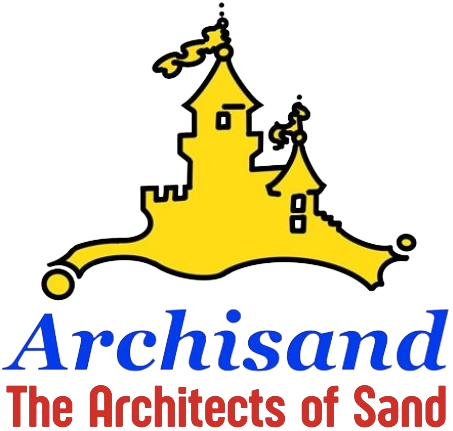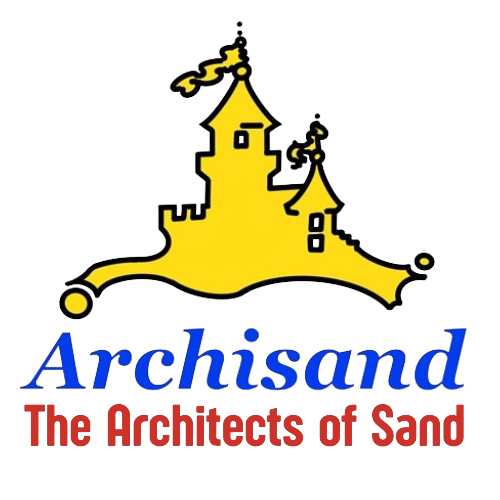THE SCIENCE IN SCUPLTURE; a place where science and art are demonstrated What is this thing called sand sculpture? And, how can it possibly apply to a young person’s life to enrich their knowledge and experience? Perhaps, these thoughts come to mind because of the misplaced teachings and rushed priorities that are placed on our modern day society in regards to education. Rush through school so that one may rush to the almighty buck – is after all an “All American Truism” or, perhaps, a myth. Sweep the once full table of educational class choices, minimize enough to train to the level of technician and not to the level of graduate, achieved student. In past eras, taking time to acquire a full rounded education was the course to completing one’s state of well roundedness. Music, Poetry, Literature, Astronomy, Mathematics, Sciences Politiques, Rhetoric and Art were all considered to be an integral part to a whole completed education. Those things when grouped together are called complement to a whole. Each one in a symbiotic relationship is integral to the whole. A complement of things is needed to make up a whole. The idea of complement in everyday language is not understood by the general public. Don’t believe it? Try using the word complement in regards to a set of things in a sentence to someone and see if they understand how parts are needed to make a whole; a completion. Or, describe to them how a true complement is not present and, therefore, it will not lead to a whole functioning system. A place where complement exists through the soft and hard sciences is demonstrated in sand sculpture each time a project is brought to completion. In art history, one can look to the time of the Medici family and Michelangelo to see that commission of work and right communication begin the process. To convey the primary message in the final piece of sculpture, drawings are produced. There is discussion with the client on the size of the project. In the artist’s mind they are considering the weight distribution of the sand on the surface. This is a place where the hours of mathematics lecture experienced by the student finally have an application outside of the classroom. This is a place where the science is in the art. 50 tons of sand will not fit on a table top and there may be times when 50 tons of sand will cause a floor to fail over a hollow space below the floor. This would exist in the example of a parking structure beneath a ballroom. The building was built to hold the floor of the ballroom intact without an additional 50 tons of sand. The types of medium to be used must be determined. Some pieces need more supportive structure than others. In other words, knowing that sand at the beach is not silts from the river bottom. And, how these two mediums differ in their required applications is essential. Knowledge of the piece may be found in literature, poetry, or art in another medium. This assists in bringing the initial concept to final impression for the client. Throughout the process of sculpting, the sculptor must know proportions and measurements. The artist must know their tools and know how to use them. Levels, measures, geometry and string compass are all used in sand sculpture. All of this requires mathematics and discernment. Pay attention to the details. Or, the devil will be in the details. Sculptures crack, fall, and fail due to lack of continual assessing of weight, packing, and amounts of water. Work that is not measured will be sloppy. In the end, the work put in will be the quality of work seen in the finished project. As you can see, much is learned and applied in the soft and hard sciences through the work of sand sculpting. Sitting in the classroom is just as important to sand sculpting as taking those things learned and applying them to real work, real life situations – on the sand pile. Archisand Professional Sand Sculptors, Inc. is the only professional sand sculptors who allow children “in the plot”. Our young family of sand sculptors has spent as long as 17 years in the sand pile alongside the masters. Some of our young sculptors started at 4 years of age because they wanted to be around family. And, they were small enough to fit into small places within the sculpture to keep it moist with water spray. As well, they were smart enough to do it too. Archisand Professional Sand Sculptors, Inc. would like to highlight the accomplishments of these young sand sculptors. It all started when they were small and Archisand has the pictures to prove it. Today, these accomplished sand sculptors have learned to apply what they have been taught in the soft and hard sciences to become talented artists on their own. Let’s get started showing off Archisand’s younger set of sculptors. You will be surprised to see how the Science in Art has displayed itself through the persistent hard work and learning of these young sculptors. Archisand is proud to have played a part in giving our youthful talented sculptors a place to precept their knowledge in the sand. Together, all these pieces have led to a full complement in the Science of Art and the talent of the young sculptors. Alex LeBon began in the sand pile at the age of 4 years old. His early start was the usual for young talent; water spraying the sculpture to retain moisture content. From here, Alex and his sister, Pamela formed a team and began entering competitions. As the years passed, Alex continued his work and study of sand sculpture. Firstly, under the direction of apprenticeship, but currently Alex is able to have direct supervision and oversight of commissioned work projects. Alex is an accomplished student and Eagle Scout. Alex has proved himself in other ways besides the sand pile. Alex

